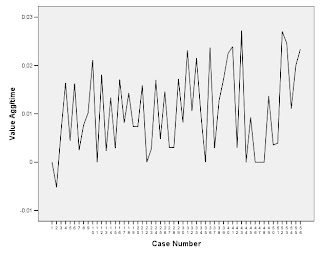Thursday, February 25, 2010
taking the blog private
I have begun discussions with Ted Sabety, our patent attorney, about commencing the process of applying for a US patent for some of the ideas in WiiCane. Ted feels that our use of an overhead array of computer-addressable lights for motion tracking may be both novel and non-obvious, requirements for patent protection. Since the blog discloses details of this, it is no longer appropriate to allow for public access, and therefore I have reset the permissions on the blog so that only contributors may read it. needless to say, I wish we didn't have to do this, because I like the idea that other researchers can find out about our work here, but apparently this could interfere with the patent process. Of course, we could also decide not to patent, but Ted feels that this is an important step from a business perspective, and the commercial viability of the product might require that we protect the intellectual property embodied in the WiiCane system. I am certainly open to discussion about this.
Sunday, February 21, 2010
Tuesday, February 16, 2010
Collaboration with Dr. Sandy Rosen
Just met with Dr. Sandra Rosen at SFSU. She was very interested and excited about our WiiCane work. She’s familiar with Guth, and her own work has focused on similar concerns. Her background is O&M and PT.
Sandy's work has looked at gait and posture (both set in place by early teen years) and their influences on veering behavior. Sandy proposed that we could do a joint project. Evaluate gait and posture before treatment, train with the WiiCane system, then re-evaluate gait and posture of individuals whose veering has diminished.. The evals are brief (~30 minutes, I believe she said). We could see if gait is actually altered by the traveler to achieve straight-line travel. Imagine – we could make a significant contribution to understand what cause and how to ameliorate veering. This would be great research!
Thoughts?
Sandy's work has looked at gait and posture (both set in place by early teen years) and their influences on veering behavior. Sandy proposed that we could do a joint project. Evaluate gait and posture before treatment, train with the WiiCane system, then re-evaluate gait and posture of individuals whose veering has diminished.. The evals are brief (~30 minutes, I believe she said). We could see if gait is actually altered by the traveler to achieve straight-line travel. Imagine – we could make a significant contribution to understand what cause and how to ameliorate veering. This would be great research!
Thoughts?
LESSON 4 for proprioceptive awareness: body rotation by degrees
I have sent lesson 4 out to the reader/reviewers for feedback. Looking forward to getting the input. This lesson forms the basis for several others in the curriculum/guide.
Sunday, February 14, 2010
Designing the overhead light track for WiiCane
Zach and I are beginning to look at the redesign of the overhead light track for a production version. We plan to use a clear 1" or 3/4" square clear acrylic extrusion . This is a highly transparent material that hopefully will not introduce any optical bending or distortion of the IR light emitters. This material costs about 40 per foot when bought in quantities of 1000 feet. For us to manufacture 50 sets we will need 50 times 32 or 1600 feet. At this quantity, the raw material cost is $12.80 for each WiiCane set. It comes in 8' lengths, so we will cut these in half; when all of these sticks are bundled up for shipping, the entire package will be only 4' x 3" x 3". With a four-sided extrusion, we will be sliding the circuit boards in through the ends rather than laying them down as with a three-sided shape. we also need to figure out how to fasten the boards to the interior of the tube from the outside. The inside dimension is either 7/8" or 5/8". It will have to be possible to ensure that the lights lie flat and evenly spaced within each section. Zach is currently deciding whether the material of the boards will be rigid or flexible; this will impinge on how these sections will join up and how they will be mounted to the ceiling. I want to continue with the assumption that the apparatus can be supported either with ceiling clips or on tension poles. I think some people will not be comfortable shooting nails into their ceiling, and they might prefer the pole set up, which will be priced higher ($1,000 vs. $1,250). We will continue to 3D print the suspension clips for now. We will need 50 times 8, or 400 clips for the first batch.
We should consider the virtue of making a suspension clip that combines the structural and electrical functions. If the board substrate is like a tape, then I do think we need to add some kind of tounge to add rigidity, and this could also slide into the adjacent section acyrlic section and snap into place, thereby making the connections of the three conductors. I am going to start ordering some sample materials and we can run some tests here in the office. It appears that brightness and equivalent light levels in the 64 IR LED's in the array is going to yield the best performance, and the only way we can be sure that it works is by testing. I reviewed a video from the Overbrook testing and noticed that the good chiming feedback stops near the end of the course, which may be caused by some amount of power drop off along the length of the course.
Wednesday, February 10, 2010


This evening I looked at another subject. It's clear over 43 trials there is noticeable improvement in veering behavior. One of the interesting things is this subject never achieved more "no veering" than "veering" feedback, until after a night's rest when her results went from always negative to general and increasingly positive (after trial 18). Again, this is far less trials than we would use in real world training.
Monday, February 8, 2010
I have some graphic (as in graphs!) information on an Overbrook subject who did almost 60 trials over two days. You can see the changes in veering behavior with these two views. One (bottom) is just looking at the number of veering feedback prompts the student received. The (top graph) is a look at the number or no-veering minus veering prompts (adjusted for the time of the trial) which show another more subtle change in behavior. REMEMBER that according to Guth this student has had less than half the trials he applied before he noticed real change in his subjects.


I won't show it here, but our youngest and more cognitively involved subject showed some improvement in fewer veering prompts but with great variability in behavior throughout his three days of trials.
This looks very promising. We need to remember also that these trials were not tightly controlled, some variables in tolerance were adjusted over the days, and that more rigorous and study with more trials might yield much more significant results. Subjects (the small sample I looked at) do not seem to have consolidated or stabilized the straight-line behavior.
BTW, I looked at these subjects based solely on whether thaey veered at all when they began the trials (a few students did not) and whether we actually were able to conduct good testing with them; I did not select out the best (most iorived) subjects to look at because honestly I couldnt tell you who they would be.
Sunday, February 7, 2010
Another look
First look at WiiCane feedback on single user. One day only 19 trials

This a subject from Overbrook, on a single day, with 19 trials down the course. You can see the effects. The x-axis is the trial number. The two lines plot the number of "no veering" conditions and "no veering" less the number of veers.
Even in this brief look at a single subject the positive effects can be seen. I'll be doing some more simple presentations soon.
Subscribe to:
Comments (Atom)




